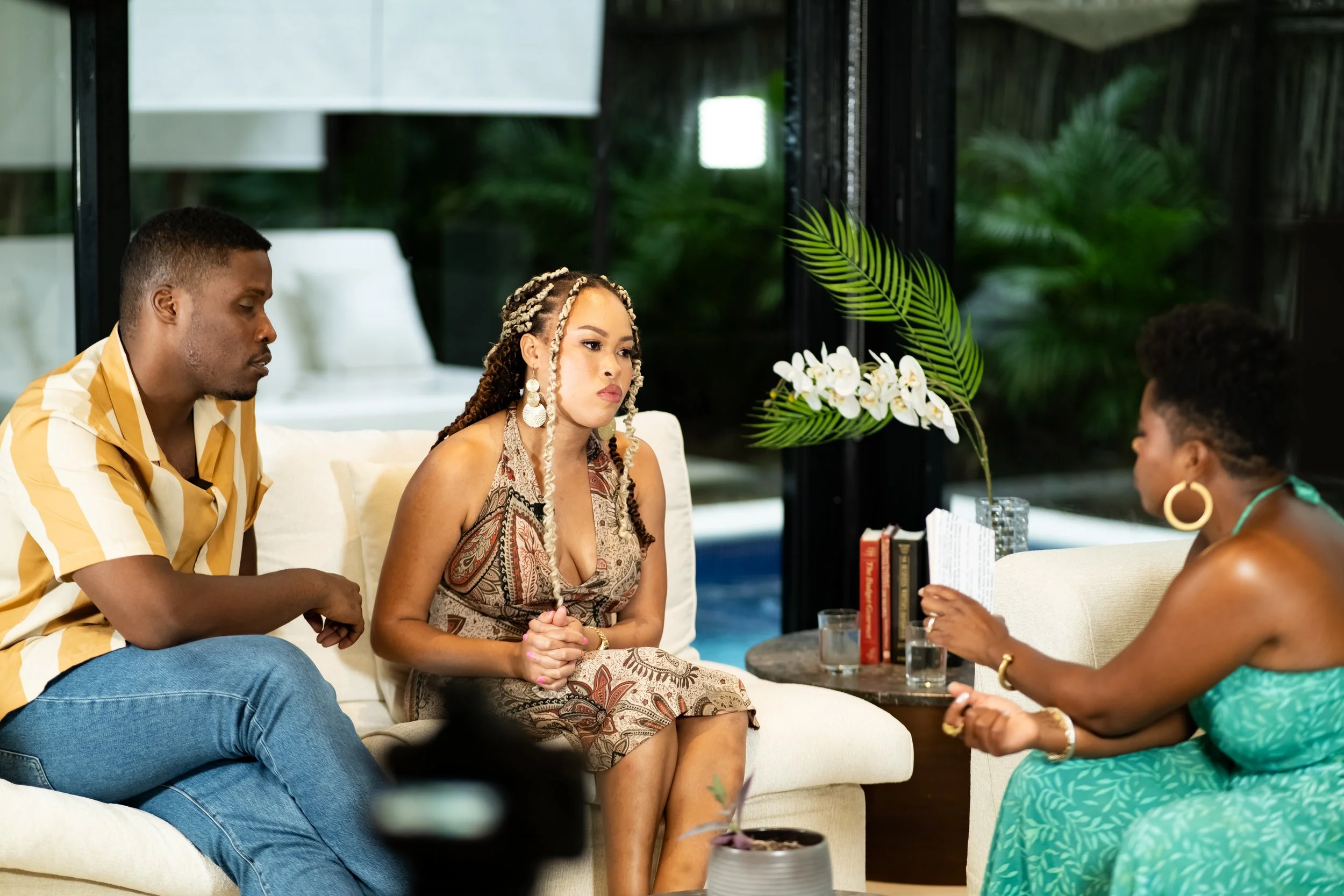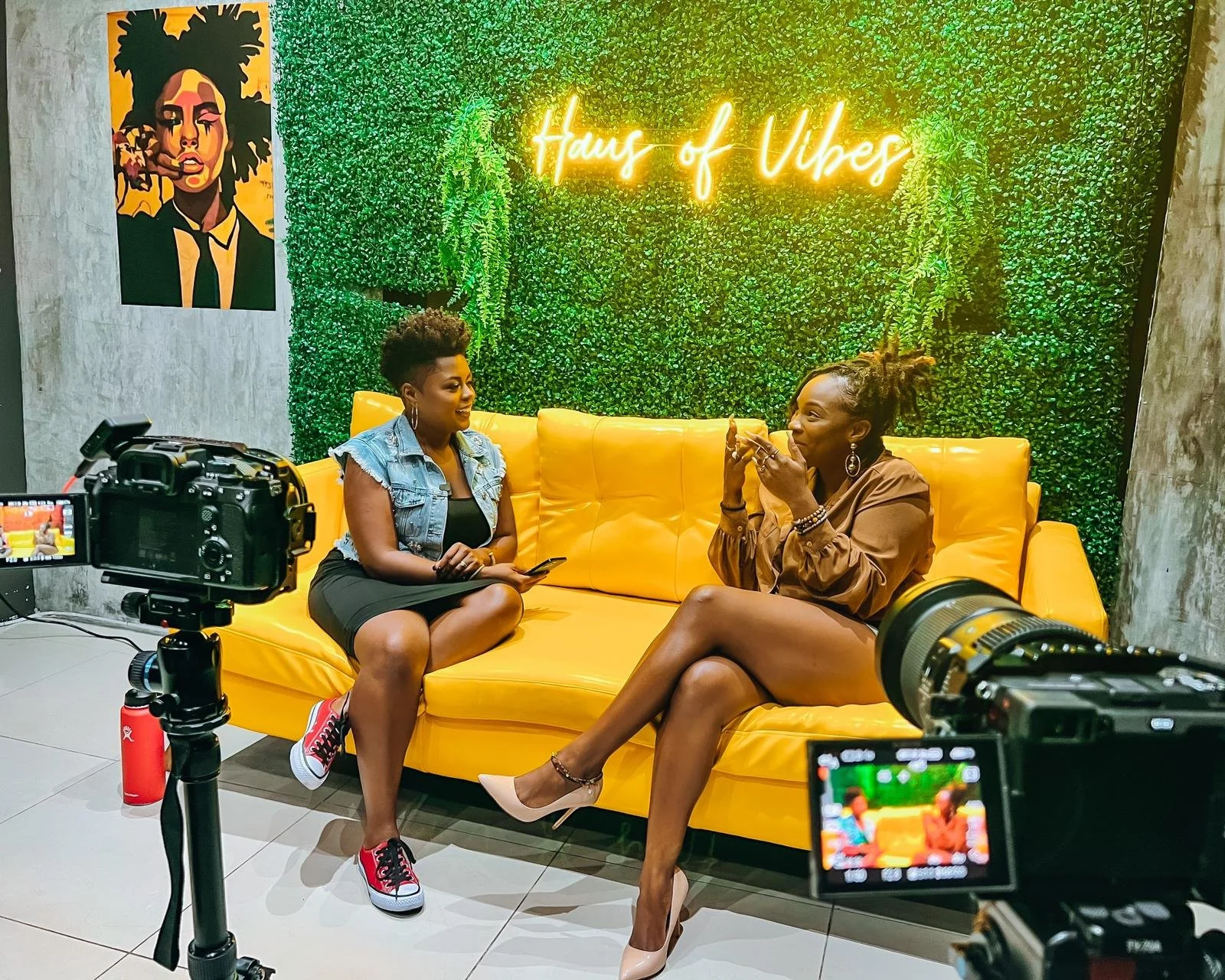Scholar, Strategist, Global Storyteller: My Three-Act Creative Journey & the Mission Fueling My Work
My creative journey started with a deep desire to see marginalized people depicted as multi-dimensional human beings in the media we consume and the stories we share.
Here are a few moments that shaped how I arrived here — and why I do the work I do now.
ACT I: The Scholar
I Studied Mass Media Systems So I Could Learn How to Disrupt Them.
I spent my childhood in a sundown town. It was a zip code that reminded me every evening who was welcome after dark, and the anti-Blackness inherent in that reality showed up every day in the way I was treated.
I was on the honor roll faithfully, yet as the lone Black girl in many of my classes, I was still the first one blamed when my high school’s newspaper cash went missing.
I eventually understood that each slight—petty or colossal—was runoff from a media factory that storyboarded my life before I ever had the chance to truly author it myself. The mainstream had already handed everyone the script.
See, the problem is that the people around me, who didn’t look like me, had absorbed enough mainstream media stories to assume they knew who I was and what I could be. My non-melanated peers, teachers, school administrators and neighbors had seen Blackness framed through a narrow, damaging lens: criminals, dropouts, charity cases, and threats. So even when I excelled, I was still being filtered through a false narrative — one shaped by media systems designed to distort, flatten, or erase us entirely.
Thankfully, my parents stood in the gap. They drilled into me daily that I was as smart and capable as any classmate in that sundown town. Mom even christened me “Champ,” a built-in pep talk every time she said my name.
Still, no amount of home-grown confidence could fully drown out the static outside. Unfortunately, there were times when I’d internalize those stories. How could I not, when the nightly news and blockbuster films kept recycling the same stereotypes about people who looked like me?
In fact, a University of Houston study tracked viewers who gorge on local TV news—the lead-with-a-mugshot kind—and found they carried significantly higher implicit bias against Black people. The stereotype didn’t need their conscious permission. The repetition handled the wiring.
Black viewing audiences aren’t oblivious to all this, either. In a 2023 Pew survey, 63 percent of us said the news is usually more negative when the subject is Black, and four in ten said it flat-out traffics in stereotypes.
Those portrayals do more than just shape perceptions. More often than not, they harden into law.
Experiments even show that when viewers are primed with stereotypes like the “welfare queen,” their empathy drops and their support for programs such as affirmative-action or social-safety-net initiatives plummets.
This helps explain today’s wave of DEI rollbacks, where lawmakers cite the very myths television first sold them. It proves - unequivocally - that stereotypes do the heavy lifting in policy work.
When the same stereotype loops on every screen, no amount of achievement lets us outrun what it makes the world expect of us and it makes one thing painfully clear: media isn’t merely a mirror. It’s a weapon, a curriculum, and a tool of power that has been wielded against marginalized folks for too long.
So I started asking questions, like: who decides what we see? Who benefits when we’re only shown as a problem to solve or a people to pity?
That mix of curiosity and righteous anger became fuel. At Denison University, I double-majored in Communication and English Literature and launched a summer research project analyzing Hurricane Katrina coverage. I watched, clip after clip, as white evacuees became “survivors” while Black evacuees were tagged as “looters” and “refugees” (in their own country!). Same flood, different, racialized rhetoric.
Once I’d settled into in Media Studies Master’s degree program at Penn State, I focused my research on the racialized rhetoric that shapes disaster reporting. I wrote my thesis on the 2010 Haiti earthquake, which showed how cable news can turn a natural catastrophe into a 24-hour canvas for anti-Black narratives.
But I realized analysis alone wasn’t enough. I didn’t just want to critique the system. I wanted to shape the stories that could show marginalized people as beautifully layered, human, and whole.
So I left the Ivory Tower.
ACT II: The Strategist
I ‘ve Spent More Than a Decade Helping Brands Say What Matters and Tell Stories That Stick.
Once I understood how mass media systems shape narratives, I became equally obsessed with how audiences internalize them.
My best work always starts with burning questions and this time around, I was asking: What makes a message memorable? How does it move someone to act, to share, or to shift?
That line of inquiry led me into strategic communications, where I’ve spent over a decade helping purpose-driven brands sharpen their language and lead with clarity. I’ve developed messaging and campaigns for household names like Ford, McCormick, and Georgia-Pacific.
Then the pandemic hit and the racialized subtext in the media moved to top billing. News anchors labeled Black workers “essential,” while case charts made clear we were also the most expendable. At one point our death rate was nearly double that of White Americans. A mask couldn’t hide how race decided risk during these unprecedented times.
As the country locked down, the world pressed play on new footage: George Floyd’s last nine minutes and Breonna Taylor’s deadly no-knock raid. Thanks to the collective outrage that birthed the Black Lives Matter movement, for the first time, many were getting an unfiltered view of how a marginalized people had been policed and devalued for generations in the United States.
For once, the camera seemed to side with us.
Corporate America scrambled. Overnight, Fortune 500s rolled out “equity funds” and DEI task forces—pledges designed to calm outrage and assuage guilt more than to shift power. As a communications strategist, I watched PR statements get polished while the same discriminatory policies and shallow storylines endured.
Watching corporate “solidarity” collapse into a black Instagram square flipped the switch for me.
If a decade of finely tuned brand copy could be flattened that fast, I needed a medium built for deeper reckoning. Words can persuade, but moving images can interrogate and linger.
Film and TV offered the space. In the writers’ room—and later behind the monitor—I’ve been able to fuse a strategists’ brain with a storyteller's gut, cast people who look like my cousins as leads, and stop the clichés before they hit the screen.
The pivot’s already paying dividends: the 2025 “Dare to Discover” Ford Explorer commercial I helped shape took home a Silver Telly, and every new project keeps proving that when we hold the lens, the story lands deeper and sticks.
ACT III: The Global Storyteller
I Left the U.S., Moved Overseas, and Reimagined My Creative Career.
In 2021, I moved to Mexico looking for more room to breathe – financially, spiritually, and creatively. With distance, the “American Dream” felt less inevitable, and a new question took hold: What does freedom look like beyond the borders of my birthplace?
That question birthed Black Expat Stories, a multimedia podcast and digital ethnography chronicling the Blaxit—America’s next great migration. The series trades trauma headlines for possibility. It features everyday Black Americans choosing safer, freer lives abroad and naming the emotional, cultural, and spiritual stakes that push them past the border.
NPR’s 1A and Gray TV’s InvestigateTV featured my project, and the White House tapped me—alongside nine other global leaders—to advise on policy for Americans overseas during the Biden-Harris administration.
Living out the expat experience also further expanded my filmmaking ambitions. I’m now developing a documentary to capture the Blaxit Movement. The goals are three-fold:
To document an emerging migration movement by centering and amplifying the voices of those pioneering it.
To interrupt the “trauma-porn” loop so many marginalized people are relegated to and fill that gap in content with proof of possibility.
To prove that freedom isn’t tethered to one passport; it’s something we can build—brick by brick—wherever we decide to plant roots.
Because it’s hard to become what you can’t see, the film will spotlight ordinary Black folks doing boundary-breaking, life-reclaiming work.
But more than anything, Black Expat Stories reminds me that storytelling isn’t merely entertainment or marketing, it’s memory work. It’s movement work. It’s the way we grab the pen back and author what comes next in our human narrative.
The Bigger Picture
My through-line is simple: stretch the frame until it holds our full humanity, then make that story pay dividends, both culturally and commercially. Every brief, deck, treatment, and piece of content I touch works toward that end.
Whether I’m shaping a brand campaign or scripting a docuseries, my mission is the same. I desire to tell the stories the mainstream media misses and center the people who’ve always deserved more than a supporting role.
Because when a story lands, it does more than captivate—it reshapes policy, unlocks markets, and broadens what the culture remembers.
So, if your next project needs strategy with context and story with cultural fluency and global insight, let’s connect.
Together, we can turn your idea into a narrative that moves people and the bottom line.



